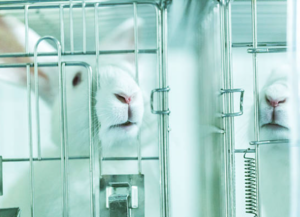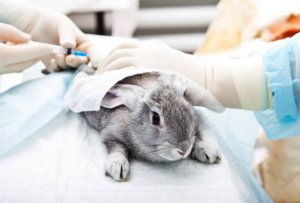The Silent Victims

In the quest for scientific advancements and breakthroughs, a silent tragedy unfolds behind closed doors—the plight of animals subjected to laboratory experiments. While research plays a crucial role in understanding and combating diseases, it is imperative to shine a light on the ethical concerns surrounding animal testing. This blog delves into the complex landscape of animal cruelty in laboratory experiments, exploring the ethical considerations, the current state of affairs, and the strides being made towards humane alternatives.
Understanding Animal Testing
The Historical Context:
The use of animals in scientific research dates back to ancient civilizations, notably in ancient Greece, where early anatomical studies involved dissections of animals. As scientific exploration evolved, so did the reliance on animals for medical research, toxicology studies, and, more controversially, cosmetic safety assessments.
Historically, animals such as dogs, rats, mice, rabbits, and primates have been chosen for experimentation due to their physiological similarities to humans. These experiments aimed to unravel the complexities of biological processes, understand diseases, and test the safety and efficacy of various substances.
Ethical Considerations:
The ethical debate surrounding animal testing revolves around the fundamental question of whether the benefits derived from scientific knowledge justify the ethical cost imposed on sentient beings. Animals used in laboratories undergo a range of procedures, from confinement to exposure to potentially harmful substances. The ethical dilemma lies in finding a balance between advancing scientific knowledge and treating living beings with compassion and respect.
Legislation and Regulation:
In response to the ethical concerns surrounding animal testing, regulatory bodies across the globe have implemented laws and guidelines to govern the use of animals in research. Notable examples include the Animal Welfare Act in the United States and the European Union’s Directive 2010/63/EU. These regulations set standards for the ethical treatment of animals in laboratories, emphasizing the principles of the “Three Rs”: Replacement, Reduction, and Refinement.
Despite these regulations, challenges persist in ensuring consistent enforcement and compliance, prompting ongoing discussions about the adequacy and effectiveness of existing laws.

The Toll on Animals
Physical and Psychological Distress:
Animals subjected to laboratory experiments endure profound physical and psychological distress. The nature of these experiments often involves confinement, invasive procedures, and exposure to substances that can be harmful. This combination of factors leads to an array of negative consequences for the animals involved.
1. Pain and Suffering:
Many experiments involve painful procedures, such as injections, surgeries, or exposure to irritating substances. The animals are unable to communicate their pain in the same way humans can, often resulting in silent suffering. The absence of pain management exacerbates their distress, raising ethical concerns about the welfare of these sentient beings.
2. Long-Term Trauma:
The trauma experienced by animals in laboratories is not limited to the duration of the experiments. Long-term consequences, both physical and psychological, may persist even after the experiments conclude. This prolonged suffering raises questions about the ethical implications of subjecting animals to enduring distress for the sake of scientific inquiry.
3. Lack of Social Interaction:
Many animals used in experiments are social beings, naturally accustomed to living in groups. However, the conditions of laboratory settings often entail isolation, depriving them of social interaction and companionship. This social deprivation contributes to psychological distress, impacting their overall well-being.
4. Repetitive Behaviors:
Confinement and limited stimulation can lead to the development of repetitive behaviors, indicating psychological distress. Stereotypic behaviors such as pacing, self-grooming to the point of injury, and rocking back and forth are manifestations of the toll that laboratory conditions take on the mental health of these animals.
5. Fear and Anxiety:
The unfamiliar and often hostile environment of a laboratory induces fear and anxiety in animals. The constant exposure to unpredictable elements, such as handling by researchers, loud noises, and unfamiliar scents, creates an ongoing state of stress that affects their mental well-being.
Lack of Enrichment:
Beyond the immediate physical and psychological impact, the lack of enrichment in the lives of laboratory animals contributes significantly to their diminished quality of life.
1. Confinement in Small Cages:
Many animals in laboratories are confined to small, barren cages, offering minimal space for movement or expression of natural behaviors. The confinement itself is a source of stress and discomfort, further intensifying the toll on their well-being.
2. Isolation from Social Groups:
Social animals, such as primates and rodents, are often separated from their natural social groups. The absence of social interactions and bonding opportunities denies them a fundamental aspect of their existence, leading to increased feelings of loneliness and frustration.
3. Limited Opportunities for Natural Behaviors:
Animals have innate behaviors that are crucial to their well-being, such as foraging, exploring, and engaging in play. The lack of opportunities to express these natural behaviors results in frustration and a sense of deprivation, further compromising their mental health.
4. Deprivation of Environmental Stimuli:
Laboratories typically provide a sterile and monotonous environment, devoid of the varied stimuli animals would encounter in their natural habitats. The absence of environmental enrichment denies them the mental stimulation needed for a well-rounded and fulfilling life.

Alternatives to Animal Testing
- In Vitro Testing: In vitro testing involves experimenting outside the living organism, utilizing cell cultures and tissues. This method allows researchers to study biological processes without subjecting animals to invasive procedures. Advances in in vitro testing have led to more accurate and reliable results, reducing the need for animal experimentation.
- Organ-on-a-Chip Technology: Organ-on-a-chip technology replicates the functions of organs on microchips, providing a more accurate representation of human physiology than animal models. This innovative approach holds promise for replacing animal testing in drug development and toxicity studies.
- Human-Based Clinical Trials: The focus is shifting towards human-based clinical trials, using computer models, epidemiological studies, and volunteer-based research. These methods provide insights into human reactions without subjecting animals to experimentation, aligning more closely with the goal of ensuring medical advancements benefit humans directly.
- 3D Bioprinting: 3D bioprinting involves creating human tissue constructs for research and testing purposes. This method allows scientists to replicate human physiology in a controlled environment, offering a viable alternative to animal testing in certain scenarios.
Addressing the Ethical Quandary
Increasing Transparency:
1. Open Communication:
A crucial step in addressing the ethical concerns surrounding animal cruelty in laboratory experiments is the promotion of open communication within the scientific community. Researchers and institutions must be transparent about the methods, purposes, and outcomes of their experiments. This transparency not only fosters accountability but also provides the public with a clearer understanding of the ethical considerations involved.
2. Ethical Review Boards:
Establishing robust ethical review boards that assess and oversee research protocols is essential. These boards should include experts in animal welfare, ethics, and relevant scientific fields. Their role is to scrutinize proposed experiments, ensuring they adhere to ethical standards and prioritize the welfare of the animals involved.
Educating Researchers and the Public:
1. Ethical Training Programs:
Researchers play a pivotal role in addressing the ethical quandary surrounding animal testing. Implementing comprehensive ethical training programs within academic and research institutions ensures that scientists are well-versed in the ethical considerations associated with animal experimentation. This education encourages researchers to explore and adopt alternative testing methods that prioritize humane practices.
2. Public Awareness Campaigns:
Educating the public about the realities of animal testing and the available alternatives is crucial in garnering support for ethical practices. Public awareness campaigns can dispel myths, provide insights into the ethical challenges, and empower individuals to make informed choices that align with their values. Informed public opinion can influence policy changes and encourage industries to prioritize ethical practices.
Advocacy for Ethical Treatment:
1. Support for Animal Welfare Organizations:
Advocacy groups dedicated to animal welfare play a pivotal role in raising awareness about animal cruelty in laboratories. Supporting these organizations through donations, volunteering, or active participation in their campaigns contributes to a collective effort to champion ethical treatment. These groups often engage in lobbying efforts, public outreach, and legal advocacy to influence policy changes.
2. Collaboration with Industry Leaders:
Collaborative efforts with industry leaders can drive change within specific sectors. By engaging with companies committed to ethical practices, advocacy groups can encourage the adoption of alternative testing methods and humane treatment of animals. Public pressure and consumer awareness can further incentivize industries to prioritize ethical considerations.
Supporting Humane Practices:
1. Funding Ethical Research Initiatives:
Governments, private entities, and funding agencies can play a crucial role in driving change by directing resources towards research initiatives that prioritize humane practices and alternatives to animal testing. Providing grants, awards, and recognition for ethical research practices creates incentives for scientists to explore and implement more compassionate methods.
2. Industry Incentives:
Governments and regulatory bodies can introduce incentives for industries that prioritize ethical treatment and invest in alternatives to animal testing. These incentives may include tax breaks, grants, or recognition for companies that actively work towards reducing or eliminating animal testing from their processes.

Challenges and Controversies
Scientific Validity: One of the primary challenges in transitioning away from animal testing is ensuring the scientific validity of alternative methods. Researchers and regulatory bodies must work collaboratively to validate and standardize new approaches to guarantee that they provide reliable data for scientific advancements.
Industry Resistance: Some industries, particularly cosmetics and pharmaceuticals, have been slow to embrace alternative testing methods. Economic considerations, coupled with a resistance to change, pose challenges in shifting industry practices towards more humane and ethical approaches.
Global Consistency: Achieving global consensus on ethical standards and alternative testing methods remains a challenge. Different countries have varied regulations, and harmonizing ethical guidelines on a global scale is essential for ensuring the uniform ethical treatment of animals in laboratories.
The silent victims of laboratory experiments are voiceless, yet their suffering demands our attention and ethical consideration. As we navigate the delicate balance between scientific progress and ethical responsibility, the imperative is to prioritize humane practices and explore alternatives that replace, refine, and reduce the use of animals in research. By fostering transparency, education, and advocacy, we can collectively work towards a future where the silent victims are heard, their suffering minimized, and scientific progress aligns seamlessly with ethical principles. The journey towards a world free from animal cruelty in laboratories requires collaboration, innovation, and a collective commitment to compassionate research practices.

